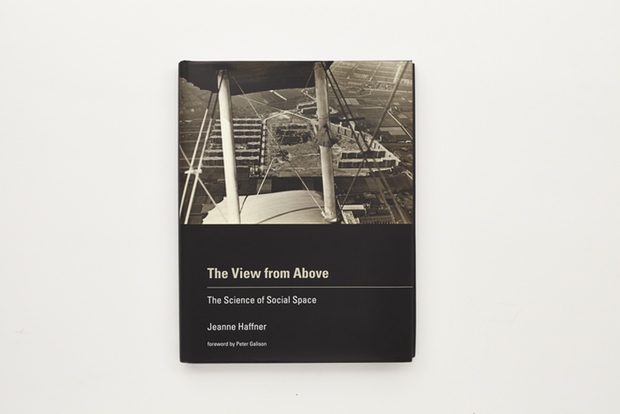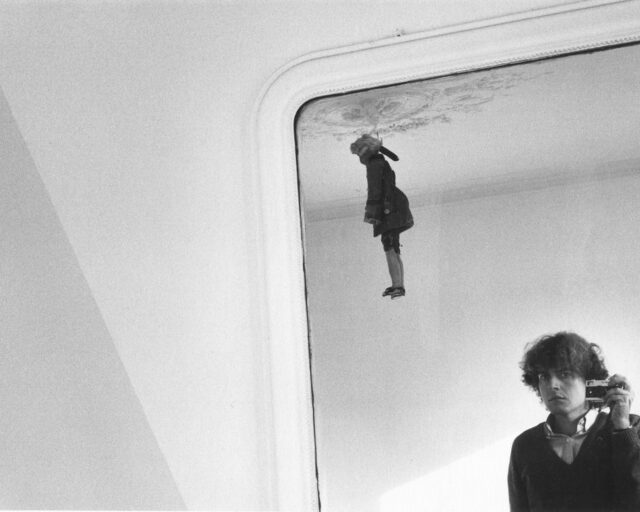The View from Above: The Science of Social Space
In fall 2005, as riots surged across the outskirts of Paris, English got a new Gallicism—one that, for once, concerned neither food nor fashion. That word, banlieue, wedged itself between its translation, suburb, which in America signifies a middle-class Elysium, and the peripheral housing blocks where the deaths of two teenage boys had fomented large-scale wide-civil unrest. Yet to go by the insights of Jeanne Haffner’s recent book, the real distinction may lie not in what we call these spaces, but in how we see them. If America, land of the automobile, sees itself through a windshield, France views its cities from the airplane cockpit. From that vantage, the banlieue is not a haven; it is a margin, a banned place.
The View from Above: The Science of Social Space charts fifty years of aerial photography in France, from its early use in military intelligence and ethnographic research to its role in constructing and critiquing the contemporary banlieue. Readers looking for a history of aerial photography, however, won’t find it here. Haffner’s book is a genealogical study not so much of a photographic genre as the discipline it by turns formed and undergirded: the study of social space. Although it parallels new studies in cultural geography and technologies of vision by the likes of Denis Cosgrove and Jonathan Crary, View from Above shifts our attention from the formation of subjects to the birth of discourses.
For Haffner, the “production of space,” in Henri Lefebvre’s phrase, became a viable field of study through the aerial photograph. The view from above gave a motley crew of French sociologists, politicians, theorists, and ethnographers tools to read space as a network of social, economic, and environmental relations. Haffner moves nimbly from outlining the professional utility of aerial photography, which lent a young, interdisciplinary field an air of objectivity and scientism, to describing its political potential as an instrument to analyze economic disparity. In the course of these insights, she unearths a cast of lesser-known heroes of the ether—“human geographer” Pierre Gourou, socialist sociologist Raymond Ledrut, and the proto-urban sociologist Paul-Henry Chombart, who emerges as the book’s central protagonist.
Chombart’s privileged position reflects less the influence of his work than its exemplary nature. Chombart, argues Haffner, hit a disciplinary sweet spot, embracing the scientific promises of the vue d’ensemble while using its findings to advance a humanist agenda. Aerial photography emerges as a fallen Esperanto for urban planners and sociologists, a Tower of Babel of interdisciplinary Marxism struck down by the very field it once structured. In the final chapter, Haffner traces the rejection of aerial photography as the French New Left began to suspect that such distanced views obscured rather than revealed the realities of everyday life. To these intellectuals, Lefebvre central among them, aerial photography signaled an oppressive, technocratic approach to urban planning at loggerheads with a socialist critique of capitalism. While clearly sympathetic to this critique, Haffner doesn’t conceal her dismay at its rejection of the “view from above.” Holistic viewpoints, she urges, are more than ever necessary. The view from above exposes the global consequences of capitalism, social and environmental injustices that can be read on the surface of the world. But few can claim ignorance of those injustices today, with or without the vue d’ensemble. Any larger claim to the significance of aerial photography would seem to depend on the particular moral force of the photographs themselves—a force Haffner does not directly address.
Be that as it may, the aerial view’s charms turn here on the aesthetic of its golden years. The View from Above is richly illustrated with photographs and diagrams, from Marcel Griaule’s low-flying shots of Dogon territory to Le Corbusier’s doodles of Latin American urban organicism—with nary a Situationist collage or satellite image in sight. As Haffner notes, one development behind the left’s rejection of the aerial photograph was a dramatic change in scale, marking not just a different degree of visual information, but a new vantage. The cockpit became the satellite, and with that change came new authorities: the pilot-cum-photographer gave way to state-controlled surveillance. By choosing to narrate the development of a discourse rather than a technology, Haffner neglects to discuss who owned and controlled aerial photography, and how that history might inflect her research.
I suspect such a focus might have displaced the spirit of contradiction in this book—a sign, perhaps, of any good study of modernism. The conflicts here are abundant and intriguing, swinging with a kind of simian agility across political and ontological positions. They occur between the “mechanical objectivity” of the aerial view and its interpretive burden; between its usefulness for critiquing capitalism and its deployment by Vichy-era politicians; and between its capacity to glean the underlying social structure of a culture, and the observation, made by Claude Levi-Strauss, that spatial configurations reflect not the reality of a culture, but the ideals of its elite. This discernment into the limits of aerial photography, however, is muffled by those thinkers—Haffner, perhaps, included—who would see in the technology a means of speaking across disciplines to improve the lot of the many. At times, Haffner herself seems to slip from recounting the early faith in aerial photography’s legibility to adopting that faith herself, and thereby excluding the contemporary critiques. For Lefebvre, in any case, it was the supposed absolute legibility of these methods that allowed them to colonize everyday life. Lefebvre’s own insight, cited by Haffner, is instructive here: “Inasmuch as the act of seeing and what is seen is confused, both become impotent.”
Jeanne Haffner’s The View from Above is available now from MIT Press.





























